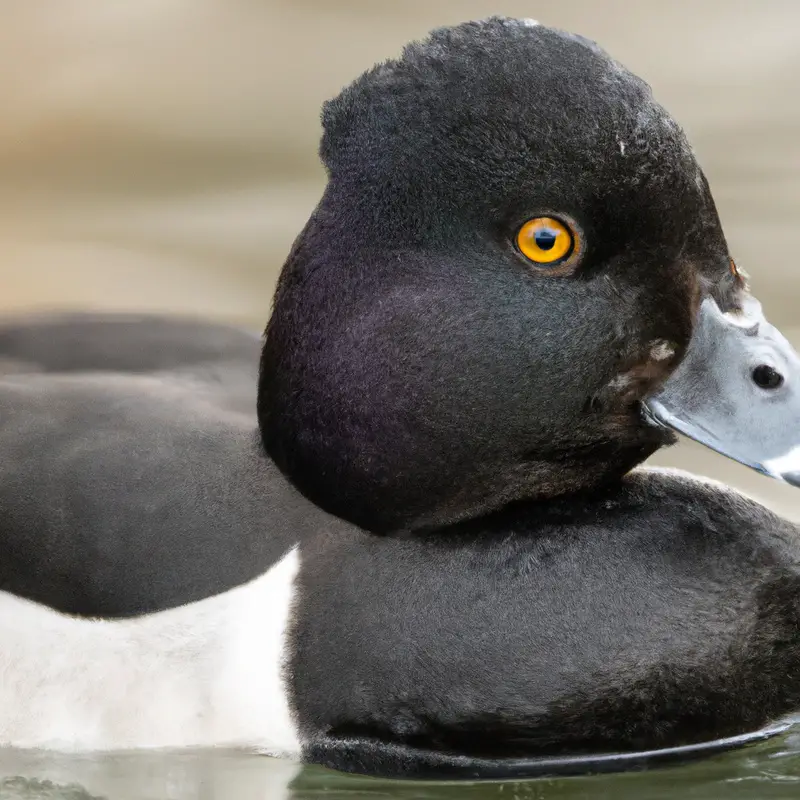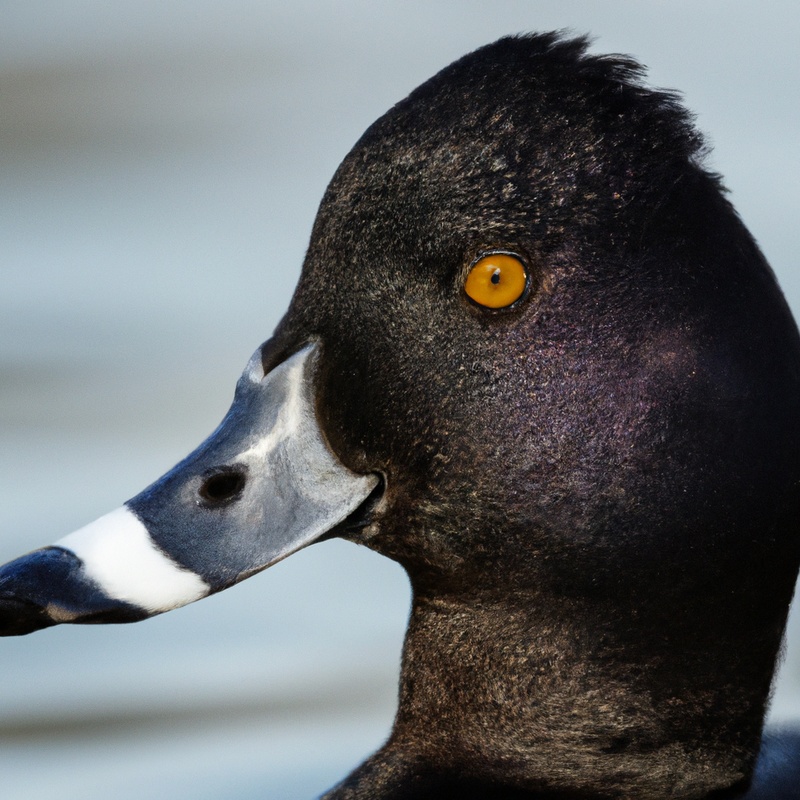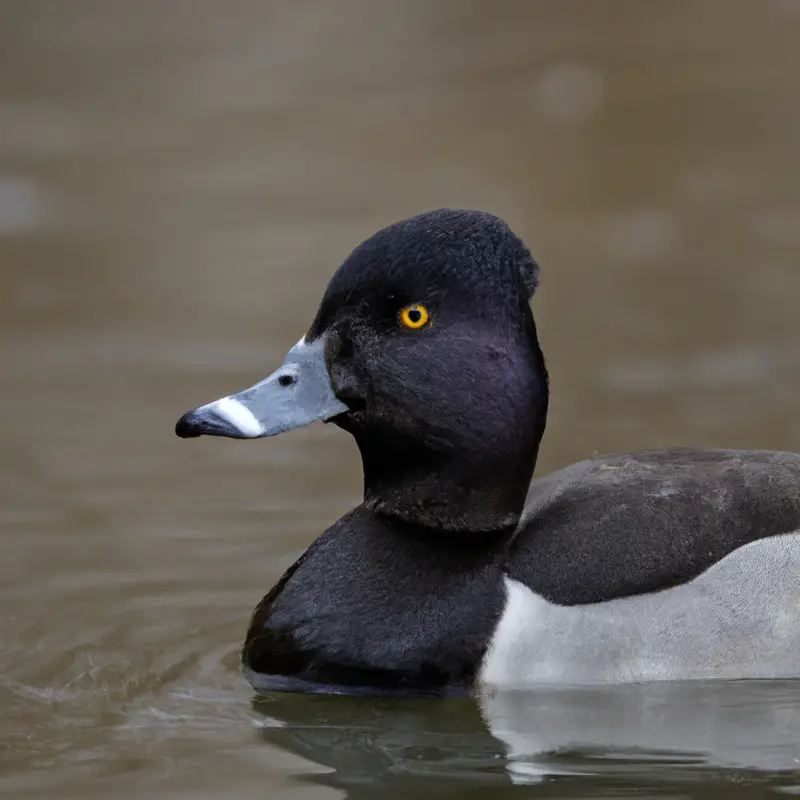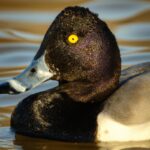Key Takeaways:
- Ring-necked ducks are a popular species for hunting in California.
- California provides abundant hunting opportunities for Ring-necked ducks.
- Hunters can find Ring-necked ducks in various regions of California.
- Hunting Ring-necked ducks in California requires compliance with local regulations and restrictions.
Are you ready to embark on an exciting hunting adventure in the picturesque landscapes of California? If you’re a hunting enthusiast like me, then you’ll find the pursuit of Ring-necked ducks in California to be a thrilling and rewarding experience.
In this blog, I’ll share my expertise on hunting these magnificent birds, from their habitat and behavior to the regulations and seasons in place.
We’ll discuss essential preparation, techniques, and share some tips for a successful hunt. And of course, we’ll touch upon the important ethical considerations for responsible and sustainable hunting.
So, grab your gear, join me, and let’s dive into the world of Ring-necked duck hunting in California!
Aspect | Description |
|---|---|
Hunting Season | October 19 to January 31 |
Location | California |
Hunting License | Required for both residents and non-residents |
Bag Limit | 7 per day, 14 in possession |
Methods of Take | Shotguns, archery equipment |
Overview of Ring-necked Ducks in California
Habitat and behavior
Ring-necked ducks can be found in a variety of habitats throughout California.
They prefer freshwater marshes, lakes, and ponds with dense vegetation.
These ducks are known for their diving behavior, often submerging themselves to feed on aquatic plants, insects, and fish.
They are strong swimmers and have adapted to life in the water.
Ring-necked ducks also migrate south during the winter months to find suitable habitats with open water.
Their behavior includes forming large flocks, especially during migration, and engaging in courtship displays and mating rituals during the breeding season.
Hunting regulations and seasons
Hunting regulations and seasons for Ring-necked ducks in California are important to ensure sustainable hunting practices and the conservation of the species. The California Department of Fish and Wildlife sets specific seasons and bag limits for hunting Ring-necked ducks.
It is important to review the hunting regulations each year as they may change.
Additionally, hunters are required to have the appropriate hunting licenses and may need to participate in hunter education programs. By adhering to these regulations, hunters can enjoy their sport while contributing to the long-term preservation of Ring-necked ducks.
Preparation for Hunting Ring-necked Ducks
Researching hunting areas
When researching hunting areas, there are a few key factors to consider.
- Look for public hunting lands: Check out state and federal websites for information on public lands open to hunters.
- Connect with local hunters and clubs: Join hunting communities or clubs in the area you plan to hunt. They can provide valuable insights and tips on hunting areas.
- Study maps and satellite imagery: Use online mapping tools and satellite imagery to identify potential hunting spots, such as wetlands or bodies of water where ducks might gather.
- Consider habitat and migration patterns: Research the preferred habitats and migration routes of ring-necked ducks. Look for areas with suitable vegetation and nearby food sources.
- Check hunting regulations: Make sure to familiarize yourself with hunting regulations and any specific restrictions for the areas you’re interested in.
Remember to respect private property, obtain necessary licenses and permits, and follow all hunting laws and regulations.
Happy hunting!

Obtaining hunting license and permits
To obtain a hunting license and permits for hunting Ring-necked ducks in California, you will need to follow a few steps. Firstly, visit the California Department of Fish and Wildlife (CDFW) website to review the hunting regulations and requirements.
Then, complete the online hunter education course if you haven’t already.
Next, purchase a hunting license and any necessary duck stamps through the CDFW website or at a local authorized vendor. Finally, make sure to carry your license and required permits while hunting, as they may be checked by wildlife officials.

Essential hunting gear
When it comes to hunting ring-necked ducks in California, having the right gear is essential.
Here are some must-have items:
- Shotgun: A reliable shotgun is crucial for a successful hunt. Opt for one with a 12 or 20-gauge capacity for maximum effectiveness.
- Ammunition: Choose high-quality shotgun shells specifically designed for waterfowl hunting. Look for loads with heavier shot, such as steel or bismuth.
- Camouflage clothing: Blend in with your surroundings by wearing camo clothing that matches the marshy environment. This will help you stay hidden from wary ducks.
- Decoys: Invest in a variety of decoys to create a realistic spread. Ring-necked ducks are attracted to decoys that resemble their own species, so include a mix of drakes and hens.
- Duck calls: Learn how to use a duck call to imitate the distinct sounds of ring-necked ducks. This will help you lure them closer for a successful shot.
- Waders or hip boots: Since you’ll be hunting in wet marshes, waterproof waders or hip boots are a must-have. They’ll keep you dry and comfortable throughout your hunt.
Remember, it’s important to check your state’s regulations and obtain the necessary licenses before going hunting.
And always prioritize safety by following the appropriate firearm handling protocols.
Happy hunting! Content Length: 99 words
Techniques for Hunting Ring-necked Ducks
Choosing the right hunting spot
Choosing the right hunting spot is essential for a successful hunt.
Here are a few factors to consider:
- Habitat: Look for areas with good vegetation, such as marshes or water bodies, as these are preferred habitats for ring-necked ducks.
- Food sources: Find hunting spots near areas abundant with food sources that ducks feed on, like submerged aquatic plants and insects.
- Water depth: Ducks prefer water depths that allow them to dive and feed comfortably. Look for spots with appropriate water depths.
- Shelter: Ducks look for cover to hide from predators. Choose spots with natural cover such as trees, cattails, or rocky shorelines.
- Scouting: Take the time to scout potential hunting spots before your hunt. Look for signs of duck activity like feathers, droppings, or tracks.
By considering these factors, you can increase your chances of finding the right hunting spot and having a successful ring-necked duck hunt.
Happy hunting!
Decoy placement and setup
To set up your decoys for hunting Ring-necked ducks, start by placing them in a realistic formation.
Arrange them in small groups with a few scattered singles to mimic how ducks naturally gather on the water.
Position the decoys with their heads facing into the wind, as this is how live ducks typically orient themselves.
Vary the distance between decoys to create a sense of depth and realism.
Additionally, consider using motion decoys to add movement to your spread and attract more ducks.
Experiment with different setups and adapt based on the conditions and the behavior of the ducks you’re hunting.
Effective calling strategies
Effective calling strategies for hunting Ring-necked ducks involve mimicking their specific vocalizations to attract them closer to your location.
- Start with soft, subtle calls resembling the sounds of female ducks. This can create a sense of security and entice male ducks to investigate.
- Use a variety of calls, including feeding calls, comeback calls, and greeting calls, to mimic a group of ducks. This can create a more realistic and enticing scenario for approaching ducks.
- Be patient and listen carefully to the ducks in your hunting area. Mimicking their vocalizations and cadences can make your calls more convincing and increase your chances of success.
- Experiment with different call tones and volumes to match the conditions and the ducks’ behavior. Adjust your calling accordingly to create a natural and convincing sound.
- Remember to practice and refine your calling skills for maximum effectiveness. Pay attention to the feedback from the ducks and adapt accordingly to improve your success rate.

Tips for Successful Ring-necked Duck Hunting
Understanding the feeding patterns
Understanding the feeding patterns of ring-necked ducks is key to successful hunting.
These ducks primarily feed on aquatic vegetation, submerged seeds, and invertebrates.
They typically forage in shallow water areas such as marshes, lakes, and ponds.
Ring-necked ducks are also known to dive underwater to catch their prey.
By observing their feeding habits and locating suitable feeding grounds, you can increase your chances of finding and successfully hunting these ducks.
Consider scouting the area and identifying their preferred feeding locations to maximize your hunting opportunities.
Camouflage and concealment techniques
Camouflage and concealment techniques are essential for successful duck hunting.
You want to blend in with your surroundings and remain undetectable to the ducks.
Here are a few tips:
- Choose the right camouflage clothing that matches the environment you’ll be hunting in. This includes your clothing, hat, face mask, and gloves.
- Use natural materials like vegetation or branches to create a makeshift blind. Make sure it blends in seamlessly with the surrounding landscape.
- Be mindful of your movements. Avoid sudden or excessive movements that could alert the ducks to your presence.
- Break up your silhouette by crouching low or using a natural object as cover. This makes it harder for the ducks to see you.
- Consider using a layout blind or a duck boat as they provide excellent concealment options.
Patience and perseverance
Patience and perseverance are key when it comes to hunting, especially for ring-necked ducks. You must be willing to wait for long periods, often in uncomfortable conditions, for an opportunity to take your shot.
It’s important to stay focused and not get discouraged if things aren’t going as planned.
Remember, hunting requires dedication and a never-give-up attitude. By maintaining patience and perseverance, you increase your chances of success in hunting ring-necked ducks.
Ethical Considerations in Ring-necked Duck Hunting
Conservation efforts for Ring-necked ducks
Conservation efforts for Ring-necked ducks include protecting and restoring their habitats, implementing hunting regulations, and supporting research and monitoring programs. By conserving wetlands, where these ducks breed and feed, we ensure their survival.
Hunting regulations help maintain sustainable populations and prevent overexploitation.
Research and monitoring provide valuable data for understanding their behavior, population trends, and conservation needs. By supporting these efforts, we can safeguard the future of Ring-necked ducks and maintain a healthy ecosystem for all.
Responsible and sustainable hunting practices
Responsible and sustainable hunting practices are important for the conservation of wildlife and the natural environment. When engaging in hunting, it is crucial to follow laws and regulations set by governing bodies.
This includes obtaining proper licenses, respecting bag limits, and adhering to hunting seasons.
Additionally, ethical hunters focus on fair chase and select their targets carefully. They also aim for clean and humane kills, minimizing suffering.
Responsible hunters also prioritize habitat conservation, leaving minimal impact on the environment and promoting the long-term sustainability of wildlife populations.
Respect for wildlife and the environment
Respecting wildlife and the environment is key when hunting Ring-necked ducks.
It’s important to remember that these ducks are living creatures, and they deserve our consideration and care.
By being mindful of our impact on their habitat, we can help preserve the delicate balance of the ecosystem.
This means avoiding excessive disturbance, respecting hunting regulations, and leaving no traces behind.
Let’s enjoy the hunt responsibly and ensure the longevity of these beautiful birds and their environment.
Frequently Asked Questions (FAQs)
Can I hunt Ring-necked ducks in California without a license?
No, you cannot hunt Ring-necked ducks in California without a license. In order to legally hunt any type of waterfowl, including Ring-necked ducks, you must obtain a hunting license.
It is important to respect and adhere to the hunting regulations and licensing requirements set by the state to ensure the conservation of wildlife and responsible hunting practices.
Make sure to obtain the necessary licenses and permits before engaging in any hunting activities in California.
What is the bag limit for Ring-necked duck hunting in California?
The bag limit for Ring-necked duck hunting in California is seven ducks per day, with a possession limit of 14 ducks. This means that you are allowed to harvest and possess up to seven ducks in a single day of hunting, and you can accumulate a maximum of 14 ducks in your possession at any given time.
It’s important to be aware of and adhere to these limits to ensure the sustainability of the Ring-necked duck population.
Are there any specific hunting restrictions for Ring-necked ducks in California?
In California, there are some specific hunting restrictions for Ring-necked ducks. The state has set a daily bag limit of seven Ring-necked ducks per hunter.
When hunting these ducks, it is important to note that they can only be shot during the designated waterfowl season and with appropriate hunting licenses and permits.
Additionally, there may be specific regulations and conservation measures in certain wildlife areas or refuges, so it’s crucial to check with the California Department of Fish and Wildlife for the latest hunting rules and restrictions.
Final Verdict
Hunting Ring-necked ducks in California offers a thrilling and rewarding experience for avid hunters. With the right preparation, techniques, and ethical considerations, hunters can have a successful and enjoyable outing while respecting wildlife and the environment.
By understanding the habitat and behavior of Ring-necked ducks, researching hunting areas, obtaining necessary licenses and permits, and using essential hunting gear, hunters can increase their chances of a fruitful hunt.
Remember to practice patience, use effective decoy placement and calling strategies, and respect conservation efforts and hunting regulations. Happy hunting!








